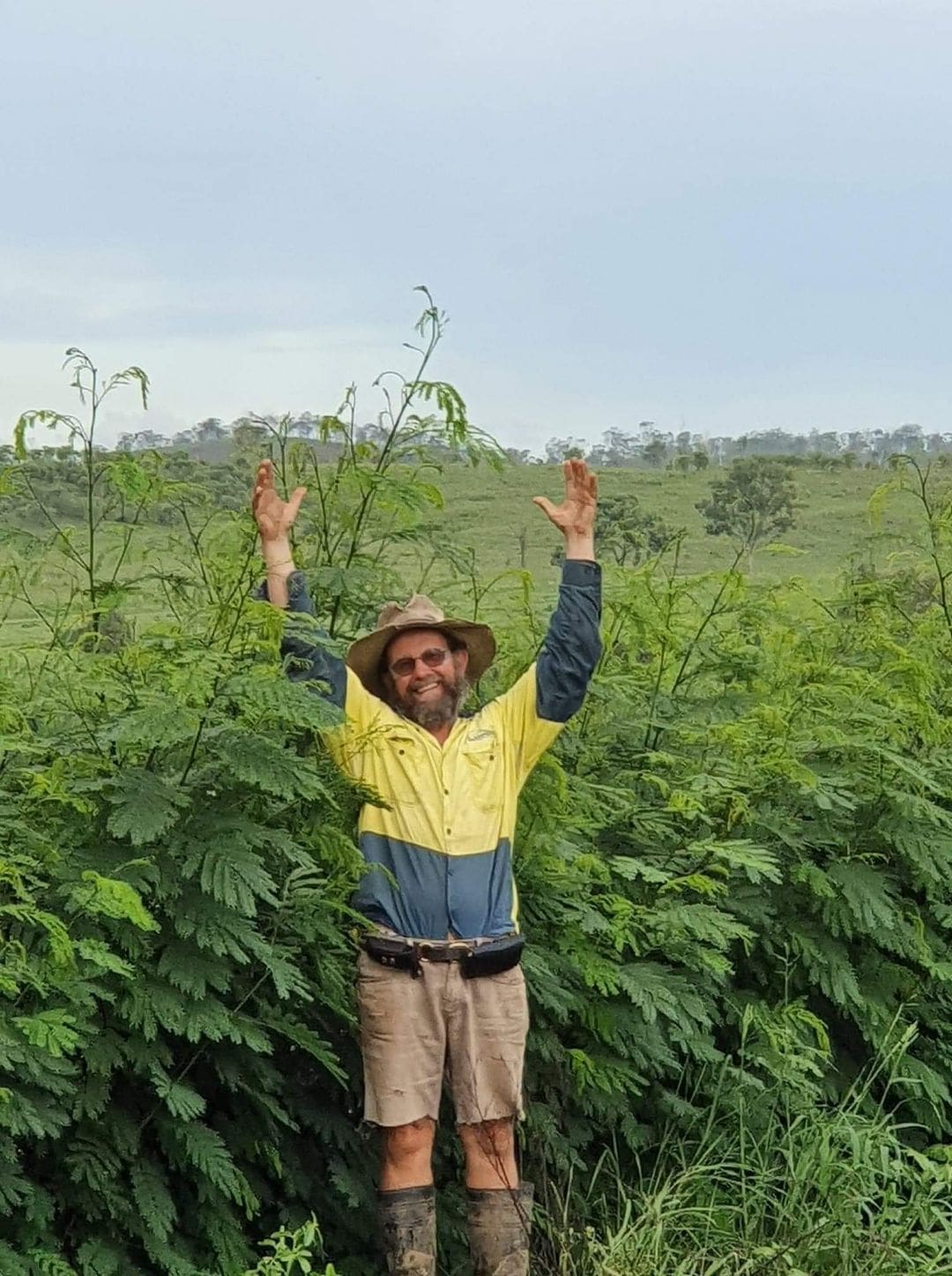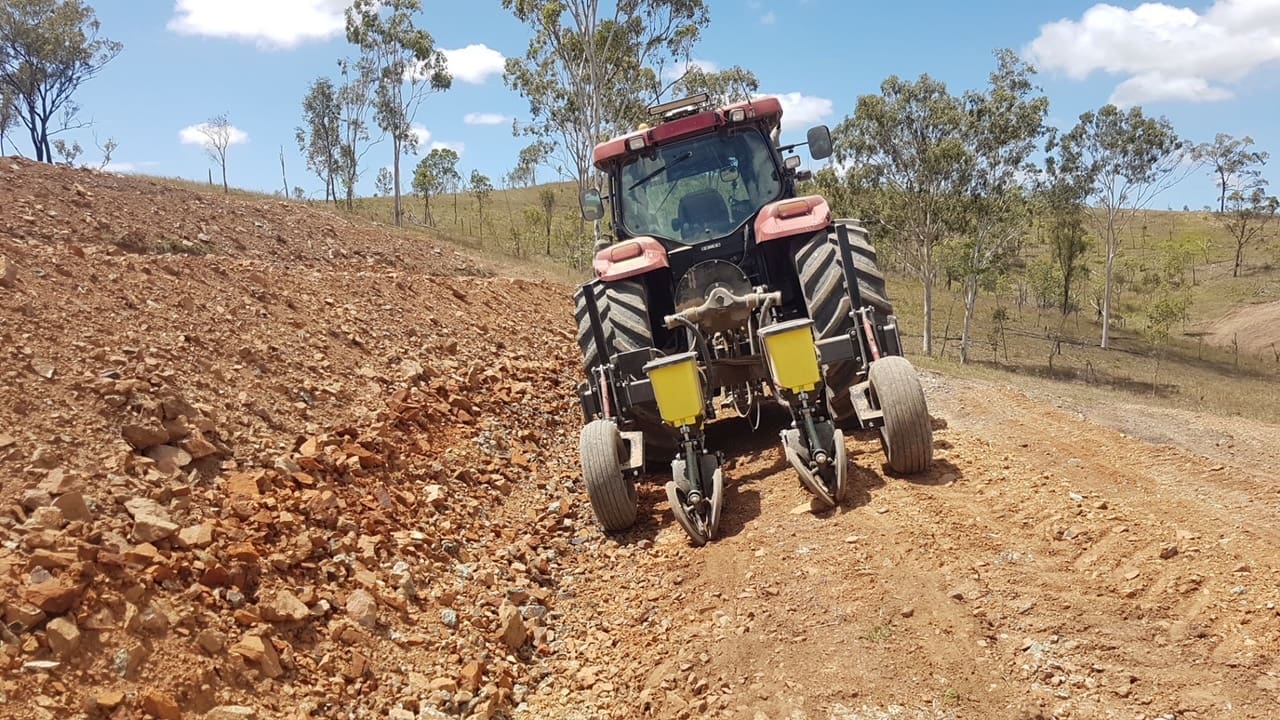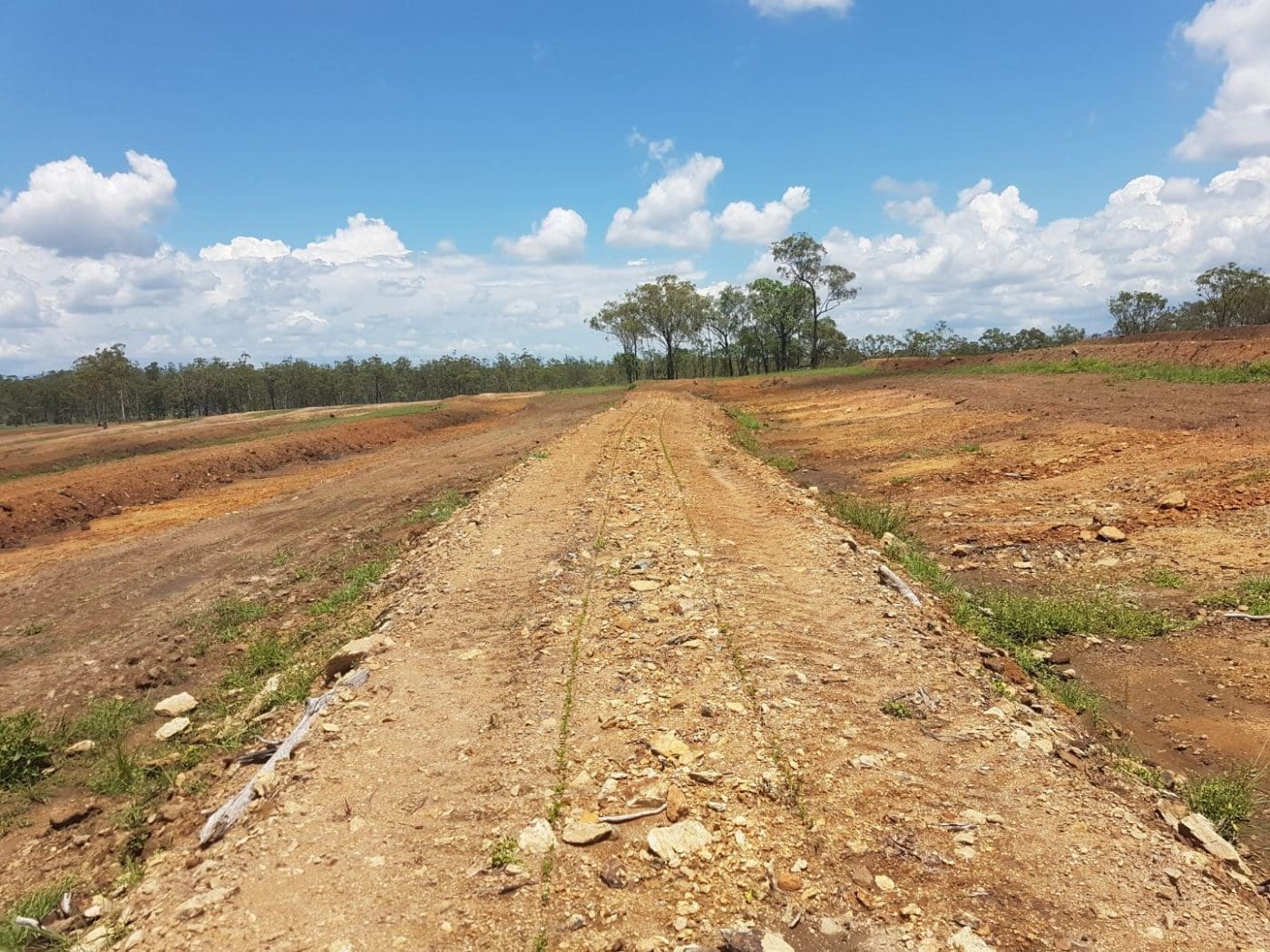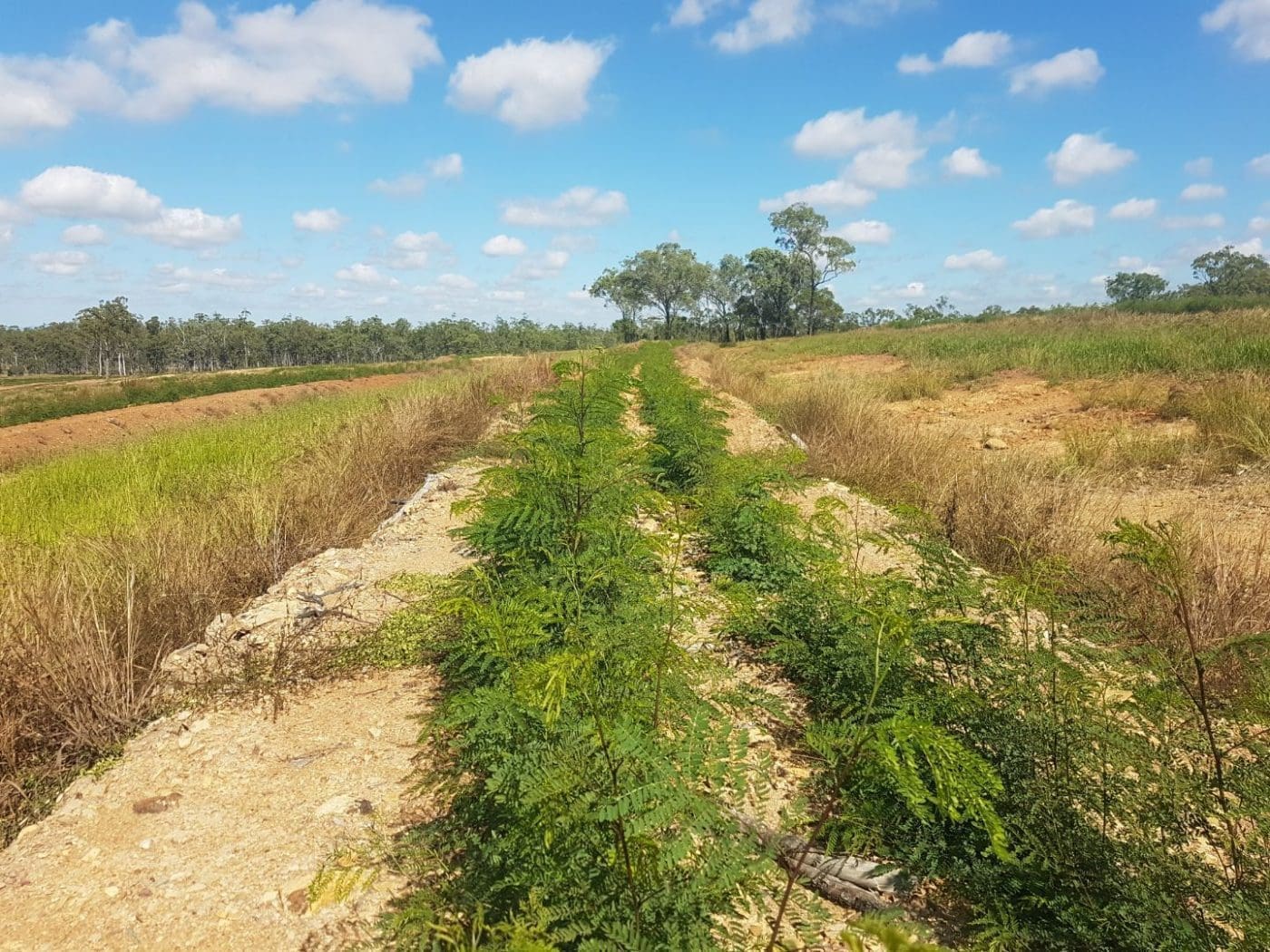A BREAKTHROUGH trial which has shown leucaena can be successfully established on second rate gravel ridges is highlighting the potential that exists for producers in many areas to unlock further productivity gains using the tropical forage legume.
The successful result on Bruce and Lucinda Mayne’s property near Gladstone in Central Queensland is one part of a leucaena development that has their operation now well on track to achieve an ambitious aim of doubling weight gain and doubling carrying capacity – in effect a fourfold increase in production levels.
Mr and Mrs Mayne have been growing leucaena for more than 30 years.
‘We are going into narrow leaf ironbark ridges, growing it virtually into gravel pits’
A field day on their property last Saturday gave producers the opportunity to see first-hand the results of an innovative trial they have been overseeing for the past three years, with support from Meat & Livestock Australia and the Leucaena Network.
The Maynes established the new psyllid resistant variety Redlands on the property three years ago to test it in a coastal environment where leucaena has not been well established in the past, largely due to psyllid pressure.
Redlands has been well established on creek flats on the property but the real point of interest for many producers at the field day was the additional success the Maynes have had in establishing leucaena in far more marginal country on the same property, not previously considered suitable for the forage tree.
“We are going into narrow leaf ironbark ridges, growing it virtually into gravel pits,” Mr Mayne explained.
“Where leucaena grows normally, like on creek flats, people are finding it is already quite productive, but we have all got ridges we wish we didn’t have, they’re good for running water off and not much else.”
The approach they have taken to establish leucaena on ridge country has involved building mounded contour banks above deep placements phosphorous.
The contour banks are designed to trap the water on the side of the hill when it rains, and to also provide a soil bed more conducive to establishment, “because leucaena seems to like disturbed mounds to grow in,” Mr Mayne explained.
A noteworthy point is that the property has had three years of well below average rainfall during the entire establishment period.
While the leucaena on the rises is not looking at its best at the moment due to the dry conditions, it has established successfully, and Mr Mayne is looking forward to the result when some decent storms finally arrive.
“We’re hoping it will hold a two to three inch (50mm-75mm) storm before the banks are full, but we have been going three years and we haven’t had a single storm of two inches or more to fill the darn thing,” he said.
“It is surviving and when we get back to normal seasons it will certainly thrive in the gravel ridges.”
Deep placements of phosphorous have also aided in the establishment.
“What we have done here is put phosphorous down first and then we build our mounds over the phosphorous, which means the phosphorous is in nice and deep, and your plants can access that,” Mr Mayne explained.
“Phosphorous is a very stable element and it doesn’t move through the soil very much.
“If you put it on top of the soil it will virtually stay on top of the soil, and the only time the plant can really utilise it is when there is moisture up there and the roots can be active near the top.
“So that is the idea of the deep placement, that the roots of the plant get a lot longer to access the phosphorous, that is really the idea.”
The trial results so far have reinforced the definitive weight gains and increases in dryland stocking rates that are being made possible with the addition of leucaena, compared to cattle on grass alone.
Mr Mayne said under normal circumstances cattle on grass on the property would typically gain about 120kg of weight gain per year.
Their goal is to lift weight gains to 250kg per beast per year (weight gains off grass alone on the property are around 120kg per beast per year) and to increase liveweight gain per hectare to 300kg per year (from around 80kg per hectare per year off grass).
“Liveweight gain per hectare is the big one we really need to be focusing on because we get paid on weight,” he said.
The ability to enhance weight gain and carrying capacity with the successful establishment of leucaena not only on the better country but also on the second-rate ridge country has helped to meet those targets.
In the past nine months the steers in the trial have added 170-180kg of weight, and, provided some useful rain falls in coming months, they are on track to achieve 250kg per beast for the year, Mr Mayne said.
‘We’re also trying to get 300kg per hectare of liveweight gain and we’re going to achieve that very comfortably’
“We’re also trying to get 300kg per hectare of liveweight gain and we’re going to achieve that very comfortably, we’re nearly there now,” he said.
Mr Mayne said the cost of establishing leucaena was in the vicinity of $1500 per hectare, particularly if contractors were used all the way through. That cost estimate also factors in the cost of having land tied up out of production for 12 months as well.
At current cattle prices, the value of increasing liveweight gain per hectare from 80kg to 300kg is astronomical, but the returns also look favourable at more modest price levels of around 300c/kg liveweight, which would equate to a $900 return per hectare per year.
Mr Mayne, who is a licensed supplier of Redlands seed, said the dry seasons of the past three years have meant psyllid pressure has been virtually non-existent anyway.
But he expects the variety to prove its worth in the coastal environment when wetter seasons return.
“I equate it to being like Brahman cattle as opposed to British breeds,” he said.
“It is not like Brahman cattle cannot get ticks, but the ticks won’t kill them.
“Whereas that is a bit the same with the Redlands, it can get psyllids, but they don’t get to those decimating levels as a rule.”




